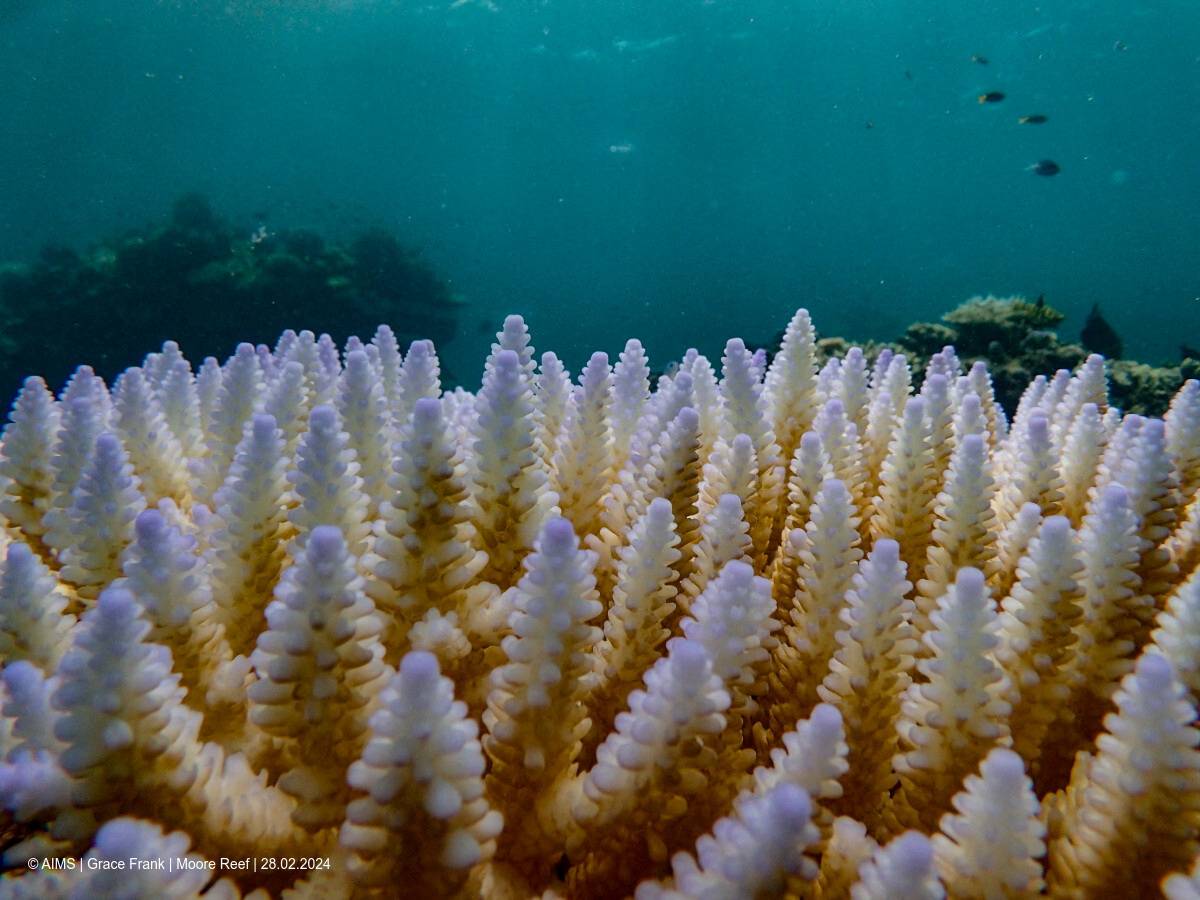Bleaching ravaging world’s corals

Along coastlines from Australia to Kenya to Mexico, many of the world’s colorful coral reefs have turned a ghostly white in what scientists said on Monday amounted to the fourth global bleaching event in the last three decades.
At least 54 countries and territories have experienced mass bleaching among their reefs since February 2023 as climate change warms the ocean’s surface waters, according to the US National Oceanic and Atmospheric Administration’s (NOAA) Coral Reef Watch, the world’s top coral reef monitoring body.
Bleaching is triggered by water temperature anomalies that cause corals to expel the colorful algae living in their tissues. Without the algae’s help in delivering nutrients to the corals, the corals cannot survive.
“More than 54 percent of the reef areas in the global ocean are experiencing bleaching-level heat stress,” Coral Reef Watch coordinator Derek Manzello said.
Announcement of the latest global bleaching event was made jointly by NOAA and the International Coral Reef Initiative (ICRI), a global intergovernmental conservation partnership.
For an event to be deemed global, significant bleaching must occur in all three ocean basins—the Atlantic, Pacific and Indian—within a 365-day period. Like this year’s bleaching event, the last three—in 1998, 2010 and 2014-2017—also coincided with an El Niño climate pattern, which typically ushers in warmer sea temperatures.

Records smashed
Sea surface temperatures over the past year have smashed records that have been kept since 1979, as the effects of El Niño are compounded by climate change. Corals are invertebrates that live in colonies.
Their calcium carbonate secretions form hard and protective scaffolding that serves as a home to the single-celled algae.
Scientists have expressed concern that many of the world’s reefs will not recover from the intense, prolonged heat stress.
“What is happening is new for us, and to science,” said marine ecologist Lorenzo Alvarez-Filip at the National Autonomous University of Mexico.
“We cannot yet predict how severely stressed corals will do,” even if they survive immediate heat stress, Alvarez-Filip added.
Recurring bleaching events are upending earlier scientific models that forecast that between 70 percent and 90 percent of the world’s coral reefs could be lost when global warming reached 1.5 degrees Celsius above preindustrial temperatures. To date, the world has warmed by some 1.2 degrees Celsius.
Tipping point
This year’s global bleaching event adds further weight to concerns among scientists that corals are in grave danger.
“A realistic interpretation is that we have crossed the tipping point for coral reefs,” said ecologist David Obura, who heads Coastal Oceans Research and Development Indian Ocean East Africa from Mombasa, Kenya.
“They’re going into a decline that we cannot stop, unless we really stop carbon dioxide emissions” that are driving climate change, Obura added.
Coral reefs are estimated to provide some $2.7 trillion in goods and services every year—with benefits such as attracting tourists, protecting coastal communities from storm surges, and supporting coastal fisheries, according to a 2020 valuation by ICRI’s scientific network.
With bleaching surveys ongoing in the Indian Ocean and Pacific, NOAA experts expect that this global bleaching event could turn out to be the most extensive yet.
Caribbean reefs experienced widespread bleaching last August as sea surface temperatures hovered between 1 and 3 degrees Celsius above normal.
Bleached corals can recover if waters cool, but some Caribbean corals were so stressed that they continued to die even as temperatures dropped over winter, Alvarez-Filip added.
Reuters, the news and media division of Thomson Reuters, is the world’s largest multimedia news provider, reaching billions of people worldwide every day. Reuters provides business, financial, national and international news to professionals via desktop terminals, the world's media organizations, industry events and directly to consumers.





















